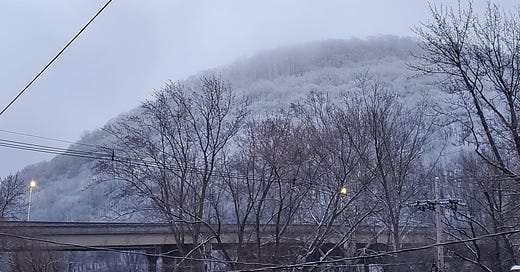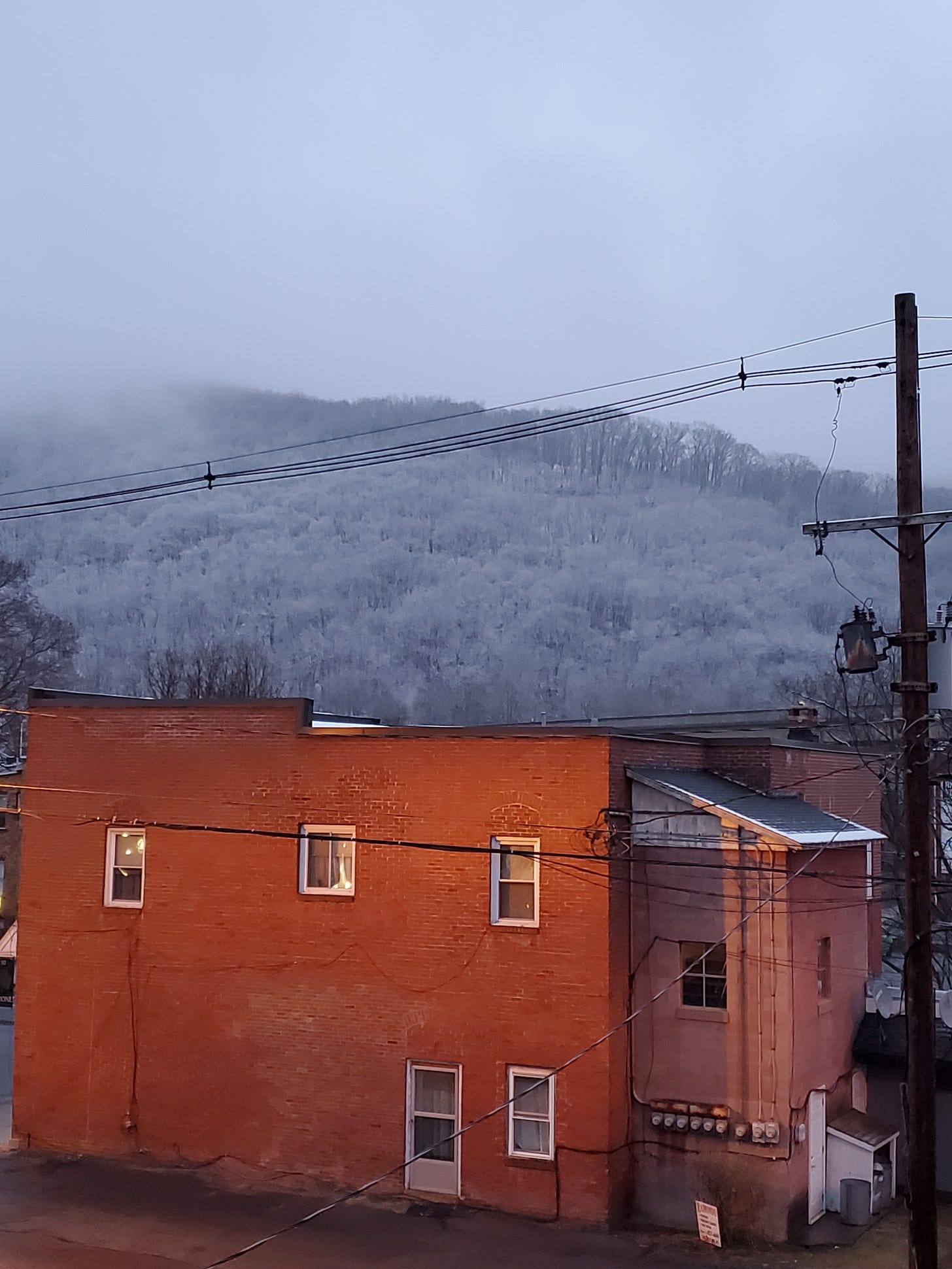Return of the Mysterious Foe Ebb
Childhood is a confusing time. Every February, my Mom would post a large, well-worn piece of paper on the fridge with the grid of Spring Arrivals - species names in a column on the left, and years in rows. From Turkey Vulture to Bellwort, it tracked the first record of each cherished plant and animal on the mountain through mid-May. There was a certain pride in being the first to record the occurrence of one of these, particularly if you were the youngest of three.
Prominent on this grid was the Eastern Phoebe, quite a puzzle to seven-year-old me, as it was the one species that I couldn’t place. Yet there it was, the foe ebb, with its row of early March arrivals stretching back to 1972.
Meanwhile, I looked forward with sharp anticipation, back when winters were winters (January and February had ‘thaws’), to the arrival of the flycatcher known to me as a fee-bee which would show up first around the old stone spring house. One day would be quiet winter; the next, filled with non-stop ‘fee-bees,’ and that meant that the rest of Spring was just around the corner.
At a certain age, I figured out the identity of the mystery bird on the fridge, and everything made sense again. It never stopped being the main bellwether of my Spring in central Pennsylvania.
Can’t Stop the Music
Today, in the middle of a wet snow, I heard the Eastern Phoebe from my balcony at 7:47 AM. It called up Bald Eagle Creek, and five minutes later closer, around the confluence. I suppose it returned sometime when I was gone, probably in the last two or three days when others were detected across the region. It wouldn’t have come from any farther away than the South (some even occasionally overwinter around here), but still, there’s no looking back. The deluge has begun.
Daylight Dark Again
Dawn birds today have to contend not only with the cloudy, snowy thirties but also with Daylight Savings Time. This only affects those whose rhythms match human activities, naturally, but I suppose an hour is still something: feeders filled an hour darker, trucks disturbing roosts an hour earlier, and so forth.
Though somewhat subdued, the dawn chorus follows a predictable rhythm prior to sunrise at 7:28 AM. The American Robin is already singing and calling around town when I go out at 7:03, and the rest begin to vocalize at 7:16: Carolina Wren, Song Sparrow (indefatigable), Common Raven, and what I now know is a local European Starling, issuing from an on-ramp joint, not arriving from over the mountain. The Tufted Titmouse’s ‘peter-peter-peter’ goes off as the school bus turns around (7:21) and the first House Finch sings in flight at 7:25.
Later, I glimpse a backyard feeder I haven’t seen before, by a house on the last street along the interstate. Tentatively, this explains the very early and purposeful movements of House Finches, Mourning Doves, and others in the neighborhood this winter, as I wasn’t previously aware of any feeders in the vicinity.
At 7:35, the junkyard raven flies up from the area of the tracks to perch on a light for awhile. I suspect it had been snacking on a deer carcass that I walked by the other day (not the one in yesterday’s photo) that has been not only been well picked over but also reshuffled, with the main outline of the animal still intact, but the bones placed in odd locations. Seems like something a raven would do; I’ll have to get a photo.
Six Canada Geese look and sound suitably magnificent flying outlined against the frosted ridge, upriver. The snow doesn’t let up, but the robins and starlings, as usual, don’t seem to care. Not much else is up in the air, though American Crows are about, as well as the first Fish Crow, calling from up the creek somewhere (PH200#69). A few minutes later, the Eastern Phoebe (PH200#70).
A pair of Common Grackles fly back and forth from the tall trees at my one and at my eleven, seemingly at peace with the starlings. A Mourning Dove dives over and it’s time to go in.
The only notable absence, after ten missed dawns, is the White-breasted Nuthatch.
I’m going through some 200 hours of night recordings, but it will be a few days until I’m able to post the species lists to eBird and then catch up with the nights in progress. Already, however, at the beginning of March, I’ve logged two new species, Northern Pintail and Long-tailed Duck, both with distinctive flock calls in night flight. We’ll see what else turns up; this weekend, after some more warmth, I suspect a spate of new diurnal species will have returned to the mountain; Fox Sparrows, Yellow-bellied Sapsuckers, and so forth.





